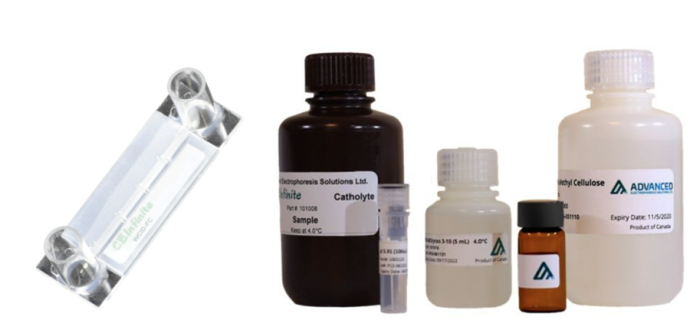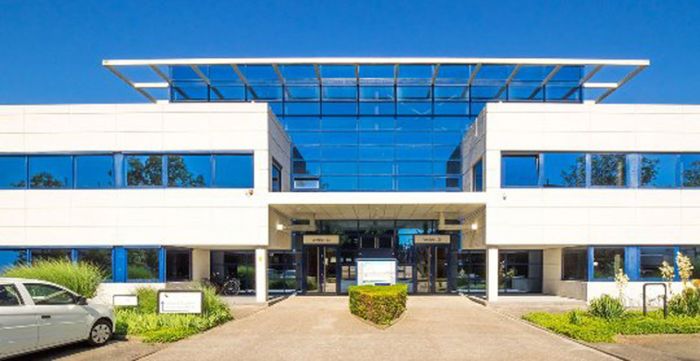CEInfinite AESlytes Carrier Ampholytes
Carrier ampholytes are essential for isoelectric focusing (IEF) separation of proteins.
Since early 60s, carrier ampholytes were developed before the introduction of imaged capillary IEF (icIEF), the unique requirement of low UV absorbance could not be applied in icIEF application. In addition, the interaction of carrier ampholytes with protein in gel media and solution phase is different. Therefore, it is advantageous to have carrier ampholytes for icIEF with low protein interaction in solution phase for reproducible icIEF protein separation and with low UV absorbance for minimised electropherogram baseline noise.
Recently, the routine commercial brands of ampholytes have been frustrating the biopharmaceutical industry. The use of these ampholytes can cause spectral shifts which have extremely negative impacts on pI measurement and quantitation of protein charge. These artifacts include a “dip” of the baseline and “shift” of both peak and pI during icIEF separation. A “dip” is commonly observed in the acidic range when using pH 3-10 and mixed ampholytes 5-8 and 8-10.5 provided by these routine commercial brands and occurs because of variable lots and sample excipients. Similarly, a “shift” of both peak and pI results from instable lots of ampholytes and is disastrous in quality control and product release. Moreover, method optimisation usually cannot overcome the above troubles with the use of routine commercial ampholytes.
AESlytes are composed of a remarkably high percentage of effective carrier ampholytes (CAs) with small ΔpK, which provides faster focusing, more stable pH gradient and proven to be consistency between manufactured lots compared to the other commercial CAs brands of the same pH range. Thanks to our unparallel lot-to-lot stability of AESlyte CAs mitigates “Dip” occurrence and “shift” of pI and peak in icIEF separation, which guarantees consistency in QC method development.
Furthermore, AESlytes have a greater proportion of “working” CA molecules, so that sufficient resolution is maintained at lower concentrations (1-2%). Finally, AESlytes with ranges as narrow as one pH unit were created for further increased resolution
Proteins are so complex, and they react differently with CAs, depending on the functional groups of CAs. Therefore, we developed three series of AESlytes that possess different basic functional groups to minimise protein interaction. AESlytes are available in High Resolution (HR), Super High (SH) and Ultra High (UH) resolution series.


 icIEF separation of ASFC Hb to demonstration pH gradient consistency across three Lots of 3-10 HR AESlytes (bottom three) and other commercial brands 3-10 carrier ampholytes (top three).
icIEF separation of ASFC Hb to demonstration pH gradient consistency across three Lots of 3-10 HR AESlytes (bottom three) and other commercial brands 3-10 carrier ampholytes (top three).

















